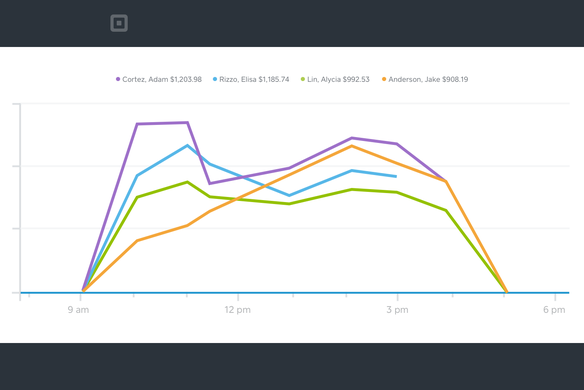Table of contents
Hunches are valuable, but you can’t run your business on them. Data, however, can help you make informed decisions about your day-to-day nuts and bolts — as well as your long-term strategic plans.
The beauty of Square is that we provide not only a point-of-sale tool but also a wealth of data about how things are trending at your business. And it’s all readily available right in your Square Dashboard. There you can see how business is going that hour, day, week, month, or year. Things like sales reports, inventory levels, and how well your email marketing efforts are performing.
But what pieces of data should you be tracking every day? Here are a few sales metrics you should always keep an eye on:
1. Sales reports by location
You don’t have to be at each of your businesses every day to get a sense about how things are going (you’re not a superhero, after all). You can see real-time sales information for each of your locations in your Square Dashboard. POS reports can help you figure out which locations are humming along — and which might need a little TLC that week.
2. Sales reports by hour
Say you’re doing a pop-up shop or an event that day. You can check up on how things are going in real time without having to be there. If sales are off the charts, you might text your manager there a congrats. If things are sluggish, you could do something to get the word out fast — like some social media posts letting your followers know about the event.
3. Sales reports by employee
With Square Employee Management, you can quickly get a sense of how your employees are doing. The tool lets you break down sales by employee for each day or month. If your employees are using timecards, you also see their sales per hour worked. These kinds of retail metrics can help you ID issues — or see who’s knocking it out of the park. Learn more about the key to scheduling employees
4. Sales reports by category
Check to see which category of item is selling best. For example, maybe your sandwiches are far outselling your soups that day. This data can be key to making in-the-moment marketing and operational decisions. You may want to get more hands on deck at the sandwich-making station, for example — or change your sidewalk signage to promote your soups.
5. Sales reports by item
Not only can you get real-time information on category performance, but you can even see which items are selling the best. If you’re selling a lot of a new offering — like a flat white, for example — you’ll know that it’s a winner and to keep it on the menu. Knowing which types of items are hot can also help you make smart inventory and purchasing decisions. You can quickly get a sense of what you need to stock up (or down) on.
6. Sales from new vs. returning customers
It’s always great to get new people in the door — but it’s your repeat customers who are your bread and butter. So you should keep an eye on how many regular customers come into your shop every day. If sales from regulars are lower than you’d like, it’s time to put your marketing tools to work.
The takeaway here: data is your best friend. And with Square’s tools, you can stay on top of the most crucial pieces of data about your business every day.
![]()











